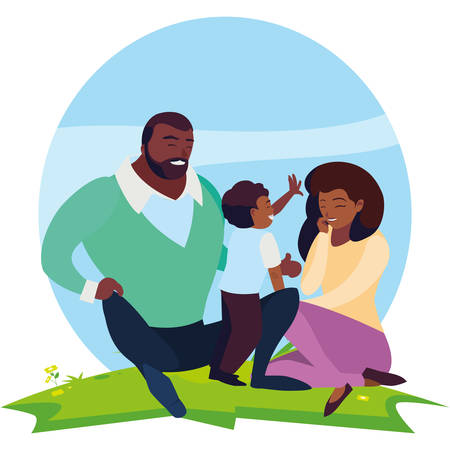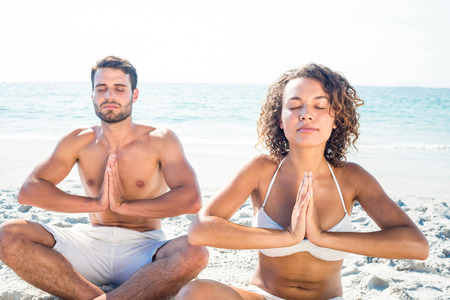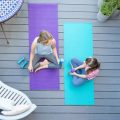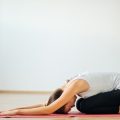Introduction to Gentle Yoga for Older Adults
Gentle yoga has quietly woven its way into the fabric of daily life across the UK, offering a soft yet powerful approach to maintaining health and vitality as we age. For older adults, especially, gentle yoga provides an accessible and supportive path to improved mobility, balance, and overall wellbeing. Unlike more strenuous forms of exercise, gentle yoga is designed with adaptability in mind, using slow movements, mindful breathing, and supportive props to ensure everyone can participate—regardless of experience or physical ability. This inclusive approach makes it particularly relevant for older generations in Britain, where staying active and socially connected becomes ever more important for quality of life. Through tailored classes in local community centres or even online sessions from the comfort of home, gentle yoga is helping people across the country nurture their bodies and minds, encouraging resilience and joy across the generations.
Benefits of Gentle Yoga for Physical Mobility
As we journey through later life, maintaining physical mobility becomes increasingly important for our independence and overall quality of life. Gentle yoga offers a supportive and accessible way for older adults to nurture their bodies, focusing on joint health, flexibility, and balance. These elements are vital not just for comfort but for safely enjoying daily routines, from strolling through the park to reaching for a favourite mug in the kitchen.
Supporting Joint Health
With age, joints can become stiffer and less resilient. Gentle yoga employs slow, mindful movements that help lubricate the joints and maintain their range of motion. This can ease everyday tasks such as walking or gardening, common British pastimes cherished across generations.
Enhancing Flexibility
Stiffness is a common concern among older adults, particularly during the colder months so typical in the UK. Through gentle stretches and poses tailored to individual ability levels, yoga gradually increases flexibility. This improved suppleness makes bending down to tie shoelaces or reaching up for groceries far more comfortable.
Improving Balance
Falls are one of the most significant risks facing older adults. Gentle yoga includes postures specifically designed to enhance balance and stability. By strengthening core muscles and improving body awareness, these practices help reduce the likelihood of falls, giving greater confidence when walking along uneven pavements or navigating busy local shops.
Key Benefits at a Glance
| Aspect | Gentle Yoga Benefit |
|---|---|
| Joint Health | Maintains mobility and reduces stiffness |
| Flexibility | Makes everyday movements easier and more comfortable |
| Balance | Lowers risk of falls and increases confidence in movement |
A Practical Approach to Daily Life
By integrating gentle yoga into your weekly routine—perhaps with a local community group or even at home—older adults can enjoy these physical benefits while also connecting with others. The focus is not on perfection but on supporting your unique body, making each day a little easier and brighter.

3. Cultivating Emotional and Mental Wellbeing
Beyond its physical benefits, gentle yoga offers a remarkable boost to emotional and mental wellbeing, especially for older adults seeking a more balanced lifestyle. Taking time on the mat allows us to step away from daily stresses, inviting calmness into our minds and bodies. Through mindful movement and breathwork, gentle yoga helps ease tension, reduce anxiety, and lift our spirits—qualities that become increasingly valuable as we age.
One of the key strengths of gentle yoga lies in its ability to support mood regulation. Simple postures paired with slow, conscious breathing can encourage the release of endorphins, helping participants feel more positive and resilient in the face of life’s ups and downs. Even on those grey British afternoons when motivation is low, joining a gentle yoga class can offer a subtle yet meaningful lift.
Relaxation is at the heart of every session. Techniques such as guided meditation or deep relaxation (sometimes known as ‘yoga nidra’) are often woven into classes, allowing older adults to unwind fully. These practices not only soothe the nervous system but also promote better sleep—a boon for anyone who struggles to switch off at night.
Importantly, participating in group yoga fosters a sense of community and belonging. Whether attending a local village hall session or connecting online with peers across the UK, sharing these moments encourages connection and mutual support. The gentle encouragement found in these settings nurtures both individual growth and collective wellbeing, reminding us that we’re all part of something bigger.
In essence, gentle yoga nurtures not just the body but also the mind and soul. By embracing these calming practices, older adults can enhance their capacity for relaxation, manage stress more effectively, and enjoy greater emotional balance—while also forging meaningful connections within their community.
4. Creating an Inclusive Yoga Practice Across Generations
In Britain, our communities are a rich tapestry of generations living side by side, each with unique experiences and strengths. Gentle yoga offers a wonderful opportunity to bridge the gap between family members and neighbours, fostering meaningful connections through shared movement and mindful breathing. When older adults invite loved ones—be it grandchildren, adult children, or friends from next door—to join a gentle yoga session, it’s about more than just stretching; it becomes a celebration of togetherness and wellbeing.
Why Intergenerational Yoga Matters
Practising yoga across age groups not only supports physical health but also nurtures emotional bonds. It encourages mutual respect and understanding, as each participant brings their own pace and perspective to the mat. For older adults, sharing yoga can be a way to pass on wisdom and promote active lifestyles among younger relatives, while younger participants may offer new energy and encouragement.
Ways to Encourage Participation
| Approach | Description |
|---|---|
| Family Yoga Sessions at Home | Create a regular time for gentle yoga in the lounge or garden, inviting everyone in the household to join in at their comfort level. |
| Community Classes | Local village halls or community centres often host inclusive sessions tailored for all ages—perfect for neighbours and friends to gather. |
| Themed Yoga Days | Host special events such as “Grandparents & Grandchildren Yoga” to encourage playful interaction and shared learning. |
Top Tips for an Inclusive Practice
- Choose simple postures adaptable for different bodies, using props like cushions or chairs if needed.
- Keep sessions relaxed with no pressure to perform—celebrate each person’s efforts equally.
- Encourage conversation before and after practice to deepen social connection.
An inclusive approach to gentle yoga not only enhances mobility and wellbeing but also strengthens the social fabric of our British communities. By celebrating intergenerational participation, we create spaces where everyone feels valued and inspired to move, breathe, and connect together.
5. Adapting Yoga for the British Home and Community
Bringing gentle yoga into your daily routine doesn’t require a grand studio or exotic retreat—our British homes, community spaces, and local parks offer all we need to cultivate mobility and wellbeing. Here are some practical tips for weaving yoga into the fabric of everyday life in the UK, ensuring that older adults can enjoy its benefits comfortably and safely.
Making Space at Home
British homes are often cosy, so adaptability is key. Clear a patch in your living room, conservatory, or even bedroom where you can stretch out a mat without bumping into furniture. Foldable chairs can stand in for props, especially for seated poses or balance support. Try practising near a window for natural light and fresh air, or pop on the kettle before you start—a gentle session pairs perfectly with a cup of tea afterwards.
Joining Local Classes and Community Groups
Across towns and villages, community centres and parish halls increasingly offer yoga sessions designed specifically for older adults. These classes foster social connections while ensuring movements are adapted to suit various abilities. Check noticeboards at your local library or GP surgery for class listings, or ask around at your neighbourhood church or village hall.
Online Resources for Accessible Practice
If getting out isn’t always easy—especially during those drizzly winter months—online yoga classes tailored for older Britons are widely available. Many instructors focus on chair-based or gentle floor routines that require minimal space and equipment. The NHS website also offers free videos and guidance, ensuring everyone has access to safe instructions from home.
Embracing All Weather Yoga
British weather can be unpredictable, but don’t let it dampen your practice. On sunnier days, take your mat to the garden or local park for a breath of fresh air; on rainy afternoons, find calm indoors by the fire or near a favourite window seat. Layer up with jumpers or use blankets during relaxation to stay warm and comfortable year-round.
Cultivating Consistency with Small Habits
The secret to lasting mobility and wellbeing is little-and-often practice. Even ten minutes most mornings can make a difference. Pair yoga with daily routines—perhaps after breakfast or before an evening episode of your favourite telly programme—to build a sustainable habit that fits naturally within your lifestyle.
By making gentle yoga accessible at home, in community spaces, and through online resources, older adults across Britain can enjoy improved mobility, connection, and peace of mind—no matter their postcode or pace of life.
6. Getting Started: Practical Advice and Encouragement
Embarking on your gentle yoga journey needn’t feel daunting, even if you’re completely new to the practice. Here are some straightforward steps tailored for older adults who wish to enhance their mobility and overall wellbeing.
Start Small and Listen to Your Body
You don’t need to be flexible or experienced to begin. Gentle yoga is about honouring your body’s current abilities. Start with short sessions—perhaps 10 to 15 minutes a day—and focus on simple movements like seated stretches or supported standing poses. Always move within a comfortable range, avoiding anything that causes pain or strain.
Create a Safe and Comfortable Space
Choose a quiet spot at home where you can stretch out without obstructions. A non-slip mat provides stability, and wearing loose, comfortable clothing helps you move freely. If you need extra support, keep a sturdy chair or wall nearby for balance.
Seek Qualified Guidance
Consider joining a local class designed for older adults. Many community centres, leisure clubs, and even churches across the UK offer gentle yoga sessions led by instructors experienced in working with mature participants. Don’t hesitate to let your teacher know about any health concerns—they can suggest modifications to suit your needs.
Tap into Community Support
Practising yoga with others can make the experience more enjoyable and motivating. Ask friends or family if they’d like to join you, or explore online groups dedicated to gentle yoga in your area. These networks often share tips, encouragement, and details of local events.
Be Patient and Celebrate Progress
Everyone’s yoga path is unique. Take pleasure in small improvements—whether it’s feeling less stiff in the morning or enjoying deeper relaxation at night. Remember, consistency matters more than intensity; gentle persistence will gradually nurture greater mobility and wellbeing across the generations.


